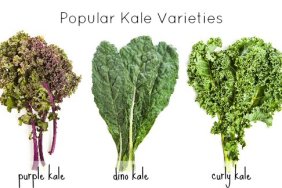Learn About Introducing Fish to Your Baby
Meats are now being recommended as a first food (but not THE first food) due to the bio-available levels of heme iron, zinc and protein.
Is Fish an Allergenic food for Babies and When Can Babies Eat Fish?
Fish, specifically shellfish and “boney” fish, are known allergens for an infant. It is often recommended to introduce fish only after a baby has reached 1 year of age.
Many sources suggest waiting until after 3 years old. Still, other sources say that introducing fish to a baby at 8, 9-10 months old is perfectly safe.
Shellfish and crustaceans should not be introduced to a child who may be allergy prone until around 1-3 years of age.
Shellfish and crustaceans such as lobster, oysters etc. can induce deadly allergic reactions. Please be sure to consult your baby’s pediatrician about shellfish and crustaceans!
Recommendations for introducing fish and other allergenic foods are changing! Many are now suggesting that babies may be introduced to fish around 6-7 months old (for those with no known history of food allergies).
“Although solid foods should not be introduced before 4 to 6 months of age, there is no current convincing evidence that delaying their introduction beyond this period has a significant protective effect on the development of atopic disease regardless of whether infants are fed cow milk protein formula or human milk. This includes delaying the introduction of foods that are considered to be highly allergic, such as fish, eggs, and foods containing peanut protein.” Click to view report
Please be sure to discuss the introduction of potential allergenic foods with your pediatrician! updated January 2010
What type of fish are the best to introduce to baby?
When first introducing fish, it is important to select one of the “white flesh” fish types.
Flounder, Haddock, Cod, and Sole are the white flesh fish and are considered some of the safest to introduce. They are the most easily digestible and lowest on the allergen list and as such, are best to use when first introducing baby to fish.
It is VERY important that you ensure the fish is entirely de-boned.. Be mindful of the fact that some fish contain tiny bones so take great care when de-boning. You may poach, bake or steam the fish and then puree as you would any other meat. Some fish is so tender when cooked that you may be able to simply fork mash it. Don’t be afraid to blend it with veggies or even fruits. Remember, your baby is not aware that flounder mixed with pears is really not a nice mix so mix up fish combinations that you think your baby may enjoy.
How Nutritious is Fish for Baby and What about the Omega 3’s?
Fish are highly nutritious and eating fish 2 times a week is recommended for both adults and children. Fish contain huge amounts of protein, are low in “bad” fats and contain Essential Fatty Acid (EFA’s) – Omega-3 fatty acids.The Omega 3 fatty acids that fish have are EPA and DHA
These EFA’s are not found higher in any other protein source, not even in meat or plants.
EFA’s found in fish and fish oil products help fight off both physical and mental diseases. It has been suggested, and some studies show, that fish oil (or other foods that contain Omega 3’s) may even help alleviate ADHD or eczema. Getting these EFA’s from fish itself is better than consuming fish oil supplements. However, if you are not a fan of fish, fish oil supplements are the next best source of EFA’s available.
Adding fish oil to your baby’s diet is a possibility and should be thoroughly discussed with your pediatrician.
Is there a risk of Mercury Poisoning for my Baby if I Introduce fish?
Yet another reason it is suggested to wait to introduce fish to babies is due to the levels of mercury that fish may contain. Mercury levels in fish have been, and will remain, a large health concern for the following groups of people:
- Women who are considering getting pregnant
- Women who are currently pregnant
- Moms who are breastfeeding and also
- Infants and young children.
It is very important that people falling into the above groups do not consume fish with high levels of mercury. Mercury can do severe damage to developing nervous systems if mercury tainted fish is eaten on a continual basis.
Which Fish May Contain the Highest Levels of Mercury?
Mercury has been found in high levels in fish species such as swordfish, king mackerel, shark and tilefish. These are the fish that contain the highest amounts of mercury so do not consume them on a regular basis and avoid offering these fish to babies.
Salmon, contrary to popular belief, is a cold water fish and it actually has lower levels of mercury than one typically thinks, as do certain types of tuna. *
Cold water fish may have lower levels of mercury and also contain higher levels of Omega 3’s.
If you are in the U.S. and are concerned about fish in your local area, you may contact your state or local fish and game/wildlife department.
You may call the US Environmental Protection Agency’s hotline at 1 (888) SAFEFOOD or visit the Food and Drug Administration’s list of State Public Health Agencies where you will find current Fish advisories for your State.
Every country has an agency for the regulation of Food and you should check with your particular agency to find out about Mercury in your Country.
![]() In the February 2010 issue of Environmental Toxicology & Chemistry, a UNLV study has shown that mercury in tuna is actually much higher than the FDA/EPA have stated in their 2004 Mercury Adivsory.
In the February 2010 issue of Environmental Toxicology & Chemistry, a UNLV study has shown that mercury in tuna is actually much higher than the FDA/EPA have stated in their 2004 Mercury Adivsory.
Baby’s Simple Fish Dinner Recipe
Ingredients:
- 1 filet of any fish
- 1/8 cup 2% or whole milk
- 1 tablespoon melted butter
- 1/2 teaspoon salt
- 1/8 cup mashed peas
- 1/8 cup mashed carrots
- 1/8 cup mashed potatoes
Directions:
Step 1: De-bone and cook fish by steaming, poaching or baking.
Step 2: Shred the cooked fish to ensure all the bones are removed.
Step 3: Put all ingredients in blender and blend or dice and toss ingredients together and serve as a Baby Finger Foods meal.
Serve warm. (add noodles or rice to make for a really filling and nutritious meal – may be blended with these additions.) Enjoy.
Get More Fish Recipes for Baby Food
Resources & Learning More:
EPA-US Dept. of Health and Human Services – Mercury in Fish 03/2004 Advisory
Omega-3’s – How to help protect against disease
Dr. Sears on Fish, Mercury and Infants
Omega-3’s – Oregon State Univ. Micronutrient Nutrition Center
Freezing Time Length for Homemade Meat Baby Foods
Baby food cubes may be safely kept in the freezer for 3 months. However it is preferable, but not an absolute must, to use the cubes within 1 month.
Meats are more unstable when frozen so it is best to use Meat Purées as soon as possible.
![]() Remember, always consult with your pediatrician regarding introducing solid foods to your baby and specifically discuss any foods that may pose allergy risks for your baby.
Remember, always consult with your pediatrician regarding introducing solid foods to your baby and specifically discuss any foods that may pose allergy risks for your baby.
![]() This site complies with the HONcode standard for trustworthy health information:
This site complies with the HONcode standard for trustworthy health information:
verify here.




